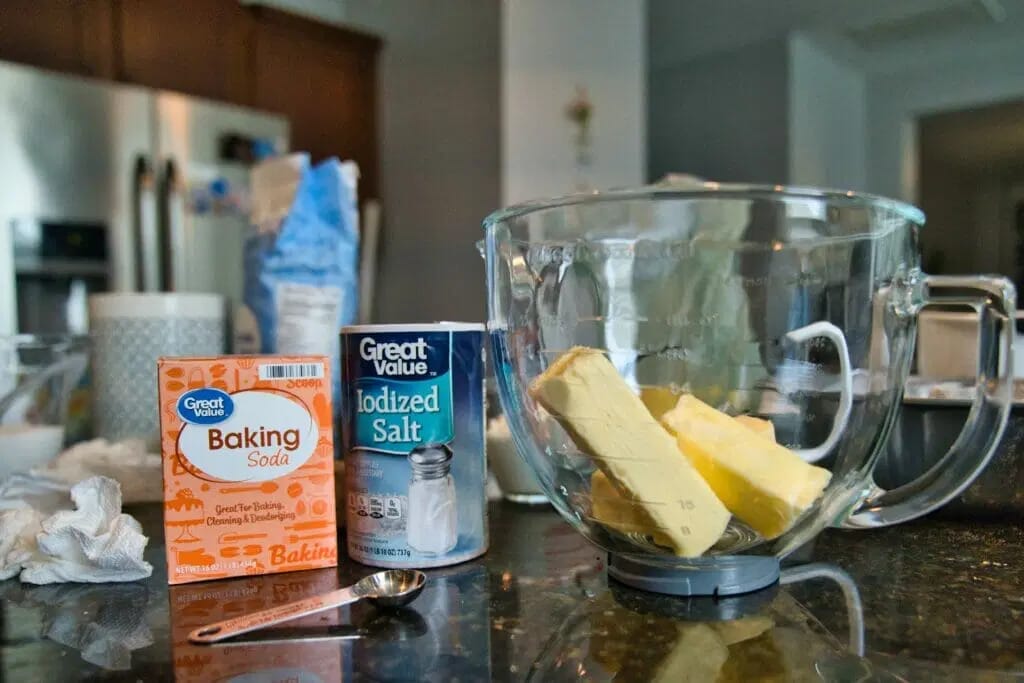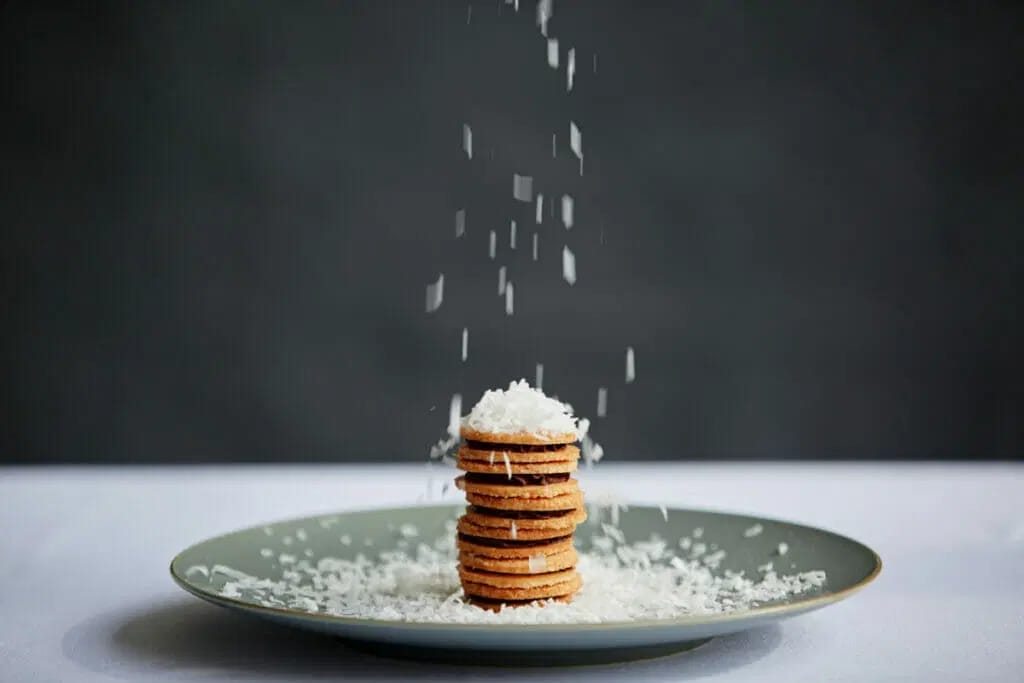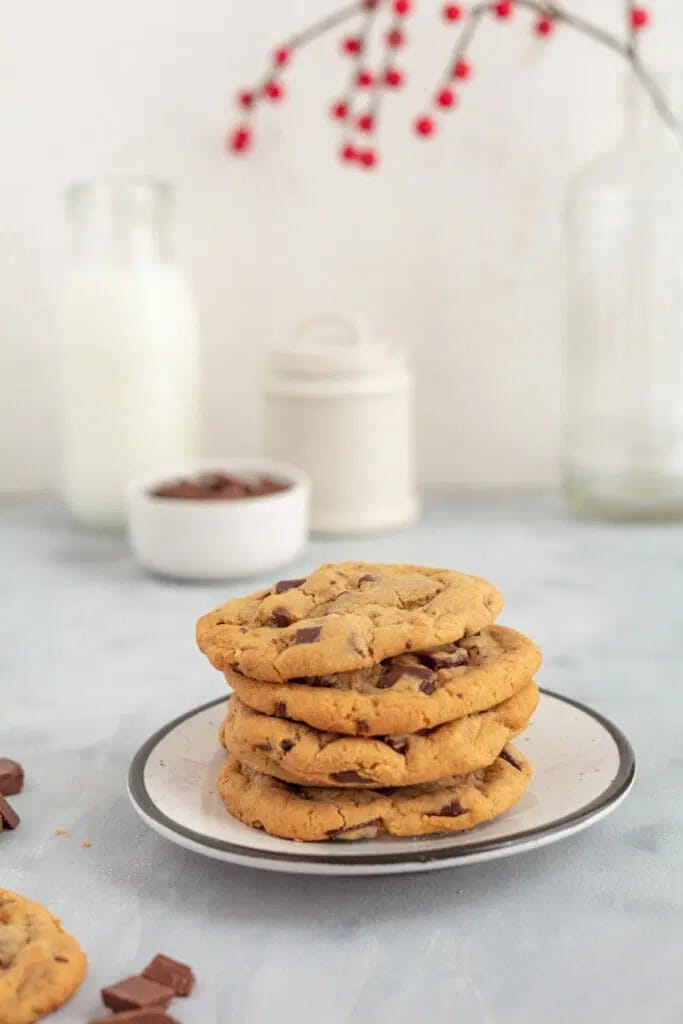As an Amazon Associate, I earn from qualifying purchases. In addition, I participate in several other affiliate programs that allow me to earn while I recommend products I love.
When it comes to baking cookies, there’s one ingredient that plays a critical role in achieving the perfect texture and taste: baking soda.
In this blog post, we’ll dive deep into the significance of baking soda in cookie recipes.
From acting as a leavening agent to creating a light and tender texture, and enhancing browning and flavor, we’ll uncover the role of baking soda in cookies and learn why to use baking soda in cookies.

The Function of Baking Soda in Cookies

what does baking soda do in a cookie recipe?
Baking soda serves multiple crucial functions in creating irresistible cookies. Let’s explore each aspect in detail.
1. Acting as a Leavening Agent
Do cookies need baking soda?
At its core, baking soda is a powerful leavening agent.
It brings life to your cookies by producing carbon dioxide gas, which causes the dough to rise and expand during baking.
This reaction occurs due to the chemical composition of baking soda (sodium bicarbonate), which, when combined with moisture and an acidic ingredient, creates carbon dioxide bubbles, leading to a light and airy texture in the finished cookies.
2. Creating Light and Tender Texture
What does baking soda do to a cookie?
One of the significant contributions of baking soda to cookies is its ability to create a light and tender texture.
This is achieved through its role in balancing the pH levels in the dough.
The Role of Baking Soda in Balancing pH Levels
Baking soda is alkaline, and when combined with an acidic ingredient in the recipe (such as brown sugar, buttermilk, or cream of tartar), it neutralizes the acidity.
This balance of pH levels helps the cookies achieve a tender texture, as the neutralized acidity tenderizes the proteins in the dough.
Interaction with Acidic Ingredients
The acidic ingredient in the recipe reacts with baking soda, causing it to release carbon dioxide gas.
This gas forms bubbles in the dough, resulting in a light and airy texture.
Formation of Carbon Dioxide Bubbles
As the cookies bake, the carbon dioxide bubbles expand, causing the dough to rise and creating air pockets throughout the cookies.
This process contributes to the desired lightness and tenderness of the final product.
3. Enhancing Browning and Flavor

What is the purpose of baking soda in cookies?
In addition to its leavening properties, baking soda also plays a role in enhancing the browning and flavor of cookies.
The Maillard Reaction and Its Impact on Cookies:
The Maillard reaction is a chemical reaction that occurs when proteins and sugars in the dough undergo complex transformations during baking.
Baking soda, along with the other ingredients, contributes to the Maillard reaction, resulting in the development of desirable aromas, flavors, and a rich golden-brown color in the cookies.
Role of Baking Soda in Flavor Development
Baking soda enhances the flavor profile of cookies by neutralizing acidity and creating a balanced taste.
This allows the flavors of other ingredients, such as vanilla, chocolate, or spices, to shine through.
Achieving a Golden-Brown Color
Baking soda helps in achieving a beautiful golden-brown color on the surface of the cookies.
The Maillard reaction, facilitated by baking soda, produces the appealing caramelization and browning effect that enhances the visual appeal of the finished cookies.
Baking Soda vs. Baking Powder

It’s important to understand the distinction between baking soda and baking powder, as they serve different purposes in cookie baking.
The Difference between Baking Soda and Baking Powder
Baking soda is a single-ingredient leavening agent, while baking powder is a combination of baking soda, an acidic ingredient, and a moisture-absorbing agent.
Baking soda requires an acidic ingredient to activate its leavening properties, while baking powder is self-activating.
When to Use Baking Soda Instead of Baking Powder in Cookies
Baking soda is typically used in recipes that contain enough acidity from ingredients like brown sugar, buttermilk, or cream of tartar.
It’s also suitable for recipes where a stronger leavening action is desired, such as in thin and crispy cookies.
Adjusting Recipe Ingredients Based on the Choice of Leavening Agent
If a recipe calls for baking powder instead of baking soda, it’s important to follow the instructions precisely to maintain the proper leavening balance.
The choice between baking soda and baking powder will depend on the specific characteristics desired for the cookies.
Tips for Using Baking Soda in Cookies

To make the most of baking soda in your cookie baking adventures, consider the following tips:
Measuring Baking Soda Accurately
Use a reliable measuring spoon to ensure accurate measurements of baking soda.
Level off the excess for precise quantities
Incorporating Baking Soda into the Dough Properly
Add baking soda at the appropriate stage of the recipe, following the instructions provided.
Proper mixing and incorporation ensure even distribution of baking soda throughout the dough.
Storing Baking Soda for Optimal Freshness and Leavening Power
Keep baking soda in a cool, dry place, away from moisture and humidity.
Proper storage ensures that it retains its leavening power and freshness for optimal results.
Baking Soda Substitutes and Alternatives

In some instances, you may need to find substitutes or alternatives for baking soda in cookie recipes.
The Use of Other Leavening Agents in Place of Baking Soda
If baking soda is unavailable, you can try using baking powder, which contains baking soda along with acidic ingredients.
However, note that this may affect the texture and taste of the cookies.
Considering Cream of Tartar and Acid Combinations
Cream of tartar, combined with an acid like lemon juice or vinegar, can be used as a substitute for baking soda in specific recipes.
This combination provides the necessary acidity for leavening.
Understanding the Potential Impact on Cookie Texture and Flavor
When substituting leavening agents, it’s important to consider the potential impact on the texture and flavor of the cookies.
Some experimentation and adjustment may be required to achieve the desired results.
Hey! Want to learn more about the role of ingredients in cookies? Check out these guides!
